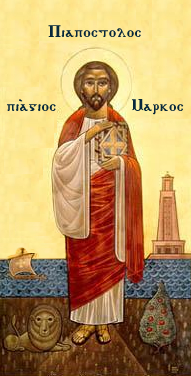Es (Cyrillic)
Cyrillic letter From Wikipedia, the free encyclopedia
Es (С с; italics: С с) is a letter of the Cyrillic script.
| Es, слово (Early Cyrillic alphabet) | |
|---|---|
| С с | |
 | |
| Usage | |
| Writing system | Cyrillic |
| Type | Alphabetic |
| Sound values | [s], [sʲ], [z], [ʃ] |
| History | |
| Development | Ϲ ϲ
|
| Other | |
| Associated numbers | 200 (Cyrillic numerals) |

It commonly represents the voiceless alveolar fricative /s/, like the pronunciation of ⟨s⟩ in "sand".

History
The Cyrillic letter Es is derived from a variant of the Greek letter Sigma known as lunate sigma (Ϲ ϲ), in use in the Greek-speaking world in early medieval times. “Es” (Cyrillic: С) is related to the Latin letter “C” (C c), visuo-phono-semantically due to being a homoglyph and having similar roots, which C is a descendant of the Greek letter Gamma (Γ γ), and therefore С is related to the Latin C and Latin G. While the Cyrillic “С” represents the /s/ sound, many languages apply the value of /s/ to the Latin letter “C,” especially before front vowels like ‘‘e’’ and ‘‘i’’ (examples include English, French, Portuguese, and Latin American Spanish). This distinction between “hard” and “soft” C reflects historical phonetic shifts. As its name suggests, “Es” is also related to the Latin letter “S.”
The name of Es in the Early Cyrillic alphabet was слово (slovo), meaning "word" or "speech".[1]
In the Cyrillic numeral system, Es had a value of 200.
Form
In the modern Latinized Cyrillic fonts in use today, the Cyrillic letter Es looks exactly like the Latin letter C, being one of six letters in the Cyrillic alphabet that share appearances with Latin alphabet letters but are pronounced differently (or at least differently from the most common pronunciation). This fact has been frequently abused by plagiarism detector circumventors.
Usage
As used in the alphabets of various languages, Es represents the following sounds:
- voiceless alveolar fricative /s/, like the pronunciation of ⟨s⟩ in "sand"
- palatalized voiceless alveolar fricative /sʲ/
The pronunciations shown in the table are the primary ones for each language; for details consult the articles on the languages.
| Language | Position in alphabet | Pronunciation |
|---|---|---|
| Belarusian | 19th | /s/, /sʲ/ |
| Bulgarian | 18th | /s/, /sʲ/ |
| Macedonian | 22nd | /s/ |
| Russian | 19th | /s/, /sʲ/ |
| Serbian | 21st | /s/ |
| Ukrainian | 22nd | /s/, /sʲ/ |
| Ossetic (Iron) | 23rd | /ʃ~s̠/ |
Computing codes
| Preview | С | с | ᲃ | |||
|---|---|---|---|---|---|---|
| Unicode name | CYRILLIC CAPITAL LETTER ES | CYRILLIC SMALL LETTER ES | CYRILLIC SMALL LETTER WIDE ES | |||
| Encodings | decimal | hex | dec | hex | dec | hex |
| Unicode | 1057 | U+0421 | 1089 | U+0441 | 7299 | U+1C83 |
| UTF-8 | 208 161 | D0 A1 | 209 129 | D1 81 | 225 178 131 | E1 B2 83 |
| Numeric character reference | С | С | с | с | ᲃ | ᲃ |
| Named character reference | С | с | ||||
| KOI8-R and KOI8-U | 243 | F3 | 211 | D3 | ||
| Code page 855 | 228 | E4 | 227 | E3 | ||
| Windows-1251 | 209 | D1 | 241 | F1 | ||
| ISO-8859-5 | 193 | C1 | 225 | E1 | ||
| Macintosh Cyrillic | 145 | 91 | 241 | F1 | ||
Related letters and other similar characters
- Σ σ/ς : Greek letter Sigma
- S s : Latin letter S
- Ѕ ѕ : Cyrillic letter Ѕ
- C c : Latin letter C
External links
References
Wikiwand - on
Seamless Wikipedia browsing. On steroids.
